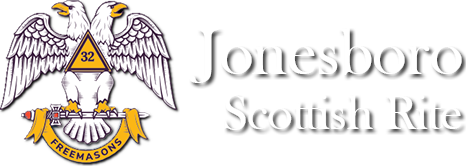The Ancient & Accepted Scottish Rite of Freemasonry, commonly known as the Scottish Rite, is one of several groups that are part of the worldwide fraternity known as Freemasonry. The Scottish Rite is the largest and most widely practiced Masonic Rite in the world and employs a lodge system.
While there is no Masonic degree more important than that of Master Mason, there is a long tradition—almost as old as Freemasonry—of “high degrees” that expand upon and elaborate the teachings and lessons of the first three degrees. The Scottish Rite degrees teach a series of moral lessons culminating in the 32°, Master of the Royal Secret. The Scottish Rite continues a Master Mason’s education in many ways:
Yes, the Scottish Rite confers degrees from 4° through 32°.
The governing body of the Scottish Rite is the Supreme Council. It is composed of active and deputy members of the 35 states and several overseas jurisdictions that make up the Southern Jurisdiction. Each state or jurisdiction that belongs to the Southern Jurisdiction is called an Orient. The local Scottish Rite body is called a Valley. Each Valley has up to four Scottish Rite bodies, and each body confers a set of degrees. In the Southern Jurisdiction, these are:
- Lodge of Perfection (4°–14°)
- Chapter of Rose Croix (15°–18°)
- Council of Kadosh (19°–30°)
- Consistory (31°–32°).
The Supreme Council confers the 33°, Inspector General Honorary every odd-numbered year.
No. The Scottish Rite degrees actually originated in France and were based on legends that came from Scotland, so “Scottish” is in name only.
Absolutely not, the Scottish Rite and other forms of Freemasonry operate very much in the open with many events open to the public. There are private “modes of recognition” (passwords and handshakes) that represent a Mason’s ability to keep a promise.
No. While it is a requirement that each member believe in a Supreme Being, it is not important how one expresses that very personal belief. Further, there is no dogmatic system in Freemasonry. Confusion about the secular nature of Freemasonry, however, has been a common misconception for many years. Most likely, this misconception is due to the Holy Book that sits on the altar in the middle of a Masonic lodge. This Holy Book does not have to be Christian, like the Bible, rather it can be any Holy Book that is important to the members of the lodge. In the US, where the population is mostly Christian, the Holy Book most often used in Lodges is the King James Version of the Bible.
Freemasonry is a fraternity (for men) whose membership must be sought by the candidate. So, in other words, to be a Mason, ask a Mason how to become a member.
No! Please have no hesitation in inviting a Brother to join. By helping a Brother journey deeper into the teachings of Masonry, you are providing him with the opportunity to not only experience additional fellowship, but to find the true and best version of himself.
Minimum initiation fees have been established by the Supreme Council, but each Valley, Council, Chapter, and Consistory fixes its own fees. Each body also requires annual dues as fixed by its bylaws.
